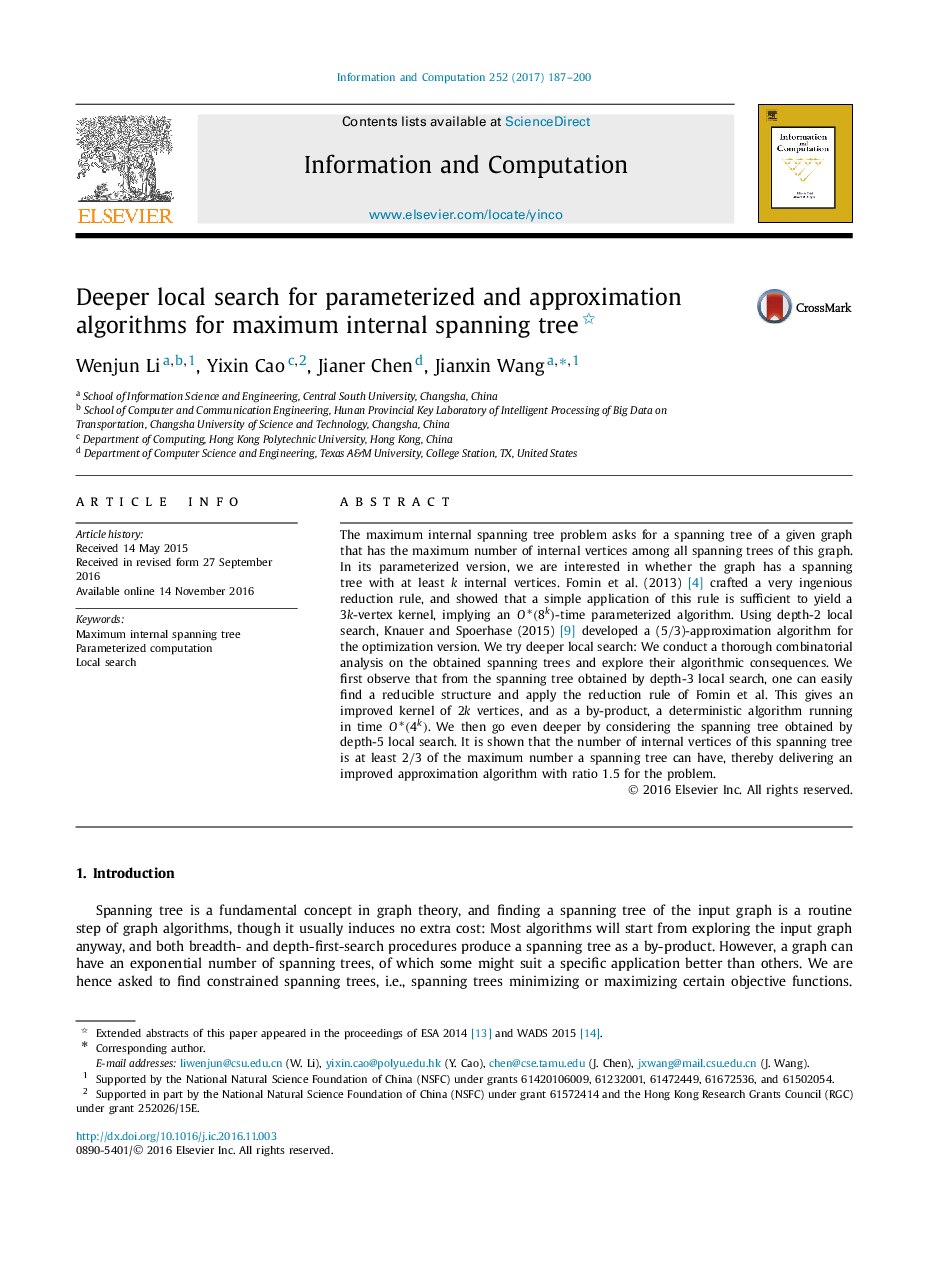| Article ID | Journal | Published Year | Pages | File Type |
|---|---|---|---|---|
| 4950636 | Information and Computation | 2017 | 14 Pages |
Abstract
The maximum internal spanning tree problem asks for a spanning tree of a given graph that has the maximum number of internal vertices among all spanning trees of this graph. In its parameterized version, we are interested in whether the graph has a spanning tree with at least k internal vertices. Fomin et al. (2013) [4] crafted a very ingenious reduction rule, and showed that a simple application of this rule is sufficient to yield a 3k-vertex kernel, implying an Oâ(8k)-time parameterized algorithm. Using depth-2 local search, Knauer and Spoerhase (2015) [9] developed a (5/3)-approximation algorithm for the optimization version. We try deeper local search: We conduct a thorough combinatorial analysis on the obtained spanning trees and explore their algorithmic consequences. We first observe that from the spanning tree obtained by depth-3 local search, one can easily find a reducible structure and apply the reduction rule of Fomin et al. This gives an improved kernel of 2k vertices, and as a by-product, a deterministic algorithm running in time Oâ(4k). We then go even deeper by considering the spanning tree obtained by depth-5 local search. It is shown that the number of internal vertices of this spanning tree is at least 2/3 of the maximum number a spanning tree can have, thereby delivering an improved approximation algorithm with ratio 1.5 for the problem.
Related Topics
Physical Sciences and Engineering
Computer Science
Computational Theory and Mathematics
Authors
Wenjun Li, Yixin Cao, Jianer Chen, Jianxin Wang,
